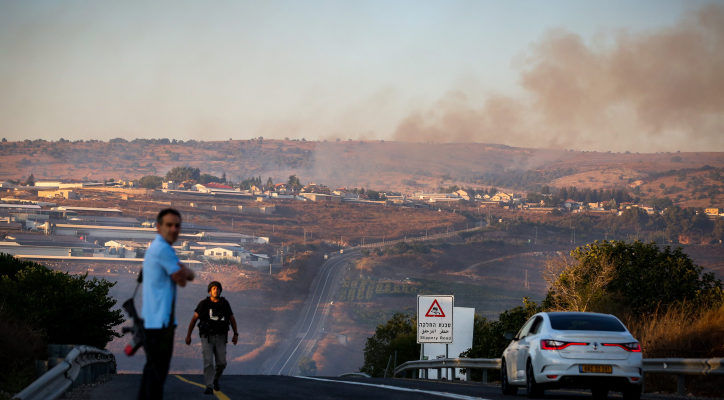Hezbollah gleefully celebrated the attack on Israeli vehicles on Sunday, falsely claiming that IDF soldiers were killed or wounded.
By World Israel News Staff
After Hezbollah fired Kornet anti-tank missiles toward Moshav Avivim in Israel’s north, the terror group celebrated its great victory, sending an “urgent message” reporting that an IDF vehicle “was struck by a Kornet missile and all the vehicle’s passengers were killed or wounded.” Not only that, it reported that a senior IDF officer was among the dead.
According to the Ynet news site, Lebanese media quickly disseminated Hezbollah’s news and Lebanon’s Prime Minister Saad Hariri immediately reached out to Secretary of State Mike Pompeo to update him on the seriousness of the situation.
Two hours later, the truth came out when Prime Minister Benjamin Netanyahu took to Israeli television, saying “We have no casualties – not even a scratch.”
In a demonstration of who can be trusted to tell the truth, the Lebanese media immediately adopted the Israeli version of events.
However, this didn’t seem to affect celebrations in Lebanon. The Washington Post reported, “Jubilant supporters took to the streets of Beirut’s Hezbollah-controlled southern suburbs in celebration.” Convoys of cars were seen honking in celebration into the evening.
Successful Israeli operation
The missile attack might better be viewed as a successful Israeli operation.
Israel had prepared for the attack, which Hezbollah’s Hassan Nasrallah promised would come in retaliation for an Israeli strike in Syria against Iranian-trained Hezbollah operatives.
Ynet says that Israel had watched changes to Hezbollah’s distribution of forces in southern Lebanon and identified more groups of Kornet missile operators spreading out and looking for Israeli targets.
The IDF changed its procedures accordingly, the news site reports, calling up additional soldiers, artillery and planes to Israel’s north. It also set up numerous checkpoints along the roads.
The attack finally came at 4:05 p.m. on Sunday. Israel had some luck. The Hezbollah terrorists fired at an armored ambulance. There were soldiers in the vehicle, which the Kornet missile narrowly missed. Ynet reports the incident could have ended very differently.
Israel fired 100 artillery shells in response, mostly smoke shells to create a screen. Israeli military aircraft also launched projectiles.
Israel then put on a production, pretending to fly wounded soldiers by helicopter and even delivering them by ambulance to a hospital.
Everything was filmed, apparently for Hezbollah’s consumption. The propaganda seems to have worked as the featured story on Iran’s PressTV website on Monday was headlined, “Israeli forces evacuate casualties after Hezbollah attack despite Netanyahu’s claims of no injury: Video.”
The Israeli purpose in creating the appearance of casualties may have been to give Hezbollah the ability to claim that it had taken revenge for Israel’s earlier attack in Syria and so would not feel obligated to continue to seek vengeance.
However, Ynet reports that Nasrallah is planning another attack, this one in revenge for the drone strike in Beirut that damaged a machine critical to the manufacture of precision missiles. Hezbollah attributes the attack to Israel, but Israel has not assumed responsibility for it.
The terrorist group claims it doesn’t want an escalation.





